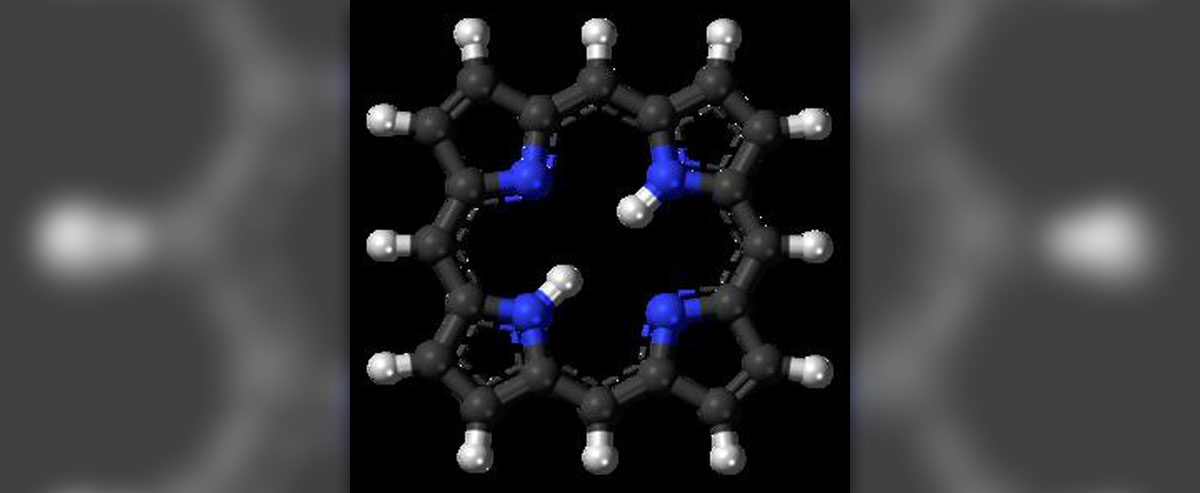
Porphyria is the term used for several conditions, all of which are characterized by excess accumulation of porphyrins or porphyrin precursors in the body. The condition is inherited and develops as a consequence of gene mutations. In the majority of cases the build-up of porphyrins is blamed for damage to the nervous system and skin and all the associated health issues.
Inherited Condition Triggered by Environmental Factors
All symptoms and signs of porphyria develop due to inadequate production of heme, a prosthetic group that comprises an iron atom contained in the center of a porphyrin. Even though heme may be present in all tissues, it is mostly concentrated in erythrocytes, the bone marrow and liver. This substance is actually the one that gives the blood red color. As a part of hemoglobin, heme participates in transfer of oxygen and carbon dioxide.
There are 8 enzymes that allow heme to be obtained from porphyrins. In people suffering from porphyria a mutation in one of several genes in charge with heme production is responsible for enzyme deficiency, subsequent accumulation of porphyrins and all the associated symptoms of the disease.
According to many medical experts porphyria is an inherited condition. The person develops the disease because the defective gene is passed from his/her parents. The disease is inherited in an autosomal dominant fashion. Only one gene can be abnormal or mutation affects several genes related to heme production.
Fortunately, not all the people who have inherited the defective gene/genes will develop porphyria. In these individuals the condition is actually in the latent form i.e. is known as latent porphyria. Such people are known as carriers, the ones that easily pass the gen to their offspring but do not develop the condition themselves.
It is of major importance to mention that although porphyria is inherited, it can be precipitated by some environmental factors. Namely, once exposed to some environmental factor, the body may feel a need to increase the production of heme, which is not possible and this leads to porphyrin build-up and the onset of characteristic symptoms and signs of the disease.
As far as potential triggers are concerned, these generally include certain medications such as barbiturates and sulfonamide antibiotics, dieting/fasting, smoking, physical/mental stress, infections of any kind, alcohol use/abuse, menstruation, exposure to the sun and the presence of excess of iron in the body.
Diagnosis of Porphyria
Porphyria can be easily classified into acute and cutaneous, both of which determine symptoms and signs of the disease. Symptoms and signs are what initially drives doctors to suspect the person is suffering from this genetic disease. However, one needs to undergo a set of tests and exams for porphyria to be confirmed.
In case of acute porphyria the condition generally affects the nervous system while the skin does not have to be affected at all. This type infrequently occurs before puberty. It is also rare in women who have entered menopause. The disease does not linger for more than 2 weeks. Patients usually complain about insomnia, anxiety and restlessness. There may also be severe abdominal pain, vomiting, diarrhea or constipation. Pain occurs in all the extremities and the back along with changes in sensorium such as tingling, numbness. Weakness and paralysis may occur as well. One may perspire excessively or become dehydrated. Additional problems include seizures, confusion, hallucinations, disorientation and paranoia.
Cutaneous porphyria, on the other hand, typically affects the skin without involvement of the nervous system. The person is too sensitive to sunlight and this is the reason why symptoms and signs of this type of the disease develop as soon as the person is exposed to the sun. The onset of cutaneous porphyria is mostly reported during infancy and childhood. The patient's skin is red, painful and swollen. Itching is another typical symptom most patients suffering from this type of porphyria complain about. Sometimes, skin damage may be so severe and trigger blistering. Finally, the urine of these patients may become red.
Patient's blood, urine and stool samples are tested with the assistance of spectroscopy as well as biochemical analysis. The level of porphyrin precursors is in the majority of patients higher than normal, especially porphobilinogen (PBG). Only in one type of the disease known as ALA dehydrase deficiency, this substance may remain within optimal range. The level of porphyrins is always measured, especially during the attack. Between the attacks the amount of porphyrins may be normal.
Genetic testing confirms the defects in genes and is also an excellent tool for determining carriers of the defective genes. However, since porphyria is not so common medical condition most general hospital labs actually do not perform genetic testing but make diagnosis according to patient's symptoms, clinical findings and results obtained after blood, urine and stool testing.
Finally, patients in whom there is damage to the nervous system undergo additional tests and exams such as nerve conduct studies which determine the extent of damage to the nerves, if present.

















Your thoughts on this
Loading...